|
  We
have already discussed Germany's pressing need for efficient treatment of
the Tuberculosis bacillus at the end of the nineteenth century on our
Beelitz-Heilstätten
mini-site but if you wish to read a little more about the TB problem in
that period please click the link in the name
ABOVE
. We
have already discussed Germany's pressing need for efficient treatment of
the Tuberculosis bacillus at the end of the nineteenth century on our
Beelitz-Heilstätten
mini-site but if you wish to read a little more about the TB problem in
that period please click the link in the name
ABOVE
.
If you wish to open a Google Earth aerial view of the Hohenlychen site
please click the Fly Me There
link to the
RIGHT
.
Before the discovery and regular use of antibiotics in the middle of the
twentieth century the only known treatment for TB was fresh air, a
balanced diet and adequate exercise, together with surgical intervention
when it proved necessary. To that end, from the late 1890s onwards, the
German authorities built numerous state of the art sanatoria all over the
country and Heilstätten
Hohenlychen is just one of many in the Brandenburg district of Prussia not
very far from Berlin.
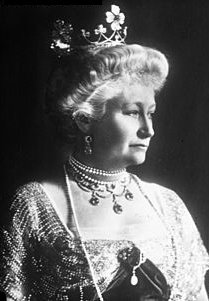 In
1902
Gotthold Pannwitz
acquired a ten acre site on the banks of the Zenssee lake just outside the
city of Lychen in order to build a children's sanatorium, funded by
donations from the German people and the Red Cross.
Initially only 30 beds were provided but within a few years this number
had increased to 500 and a second sanatorium was opened on the site for
the treatment of adult women.
In 1904 the building of a chapel on site, known as the
Helena Kapelle,
was funded by the Foundation of Venn. In
1902
Gotthold Pannwitz
acquired a ten acre site on the banks of the Zenssee lake just outside the
city of Lychen in order to build a children's sanatorium, funded by
donations from the German people and the Red Cross.
Initially only 30 beds were provided but within a few years this number
had increased to 500 and a second sanatorium was opened on the site for
the treatment of adult women.
In 1904 the building of a chapel on site, known as the
Helena Kapelle,
was funded by the Foundation of Venn.
Over the years before the Great War Hohenlychen constantly expanded and by
1914 all construction work was completed.
In 1911 the German Empress, Kaiserin Augusta Victoria of
Schleswig-Holstein,
RIGHT
,
visited the sanatorium.
 It
appears that unlike Beelitz-Heilstätten
and many of the other German TB sanatoria, Hohenlychen was NOT used
as a military hospital during the Great War however it was used in this
roll in World War II. It
appears that unlike Beelitz-Heilstätten
and many of the other German TB sanatoria, Hohenlychen was NOT used
as a military hospital during the Great War however it was used in this
roll in World War II.
With continued advances in the effective treatment of TB the requirement
for so large a number of sanatoria was cut to virtually zero within 30
years of the commencement of the massive German sanatoria building
program.
Many of the sanatoria were so under-exploited that they stood empty and so
they were re-utilised for quite different purposes. Hohenlychen was no
exception, becoming a
dedicated centre for sports and work related injuries, and reconstructive
surgery. In addition it treated
adult patients with joint disease whilst other pulmonary conditions
continued to be treated there. Funding
by the German Sports Aid council facilitated expansion and modernisation
and the newly created
clinical department for sports and work-related injuries became a renowned
and popular institution treating many of the German national team's
athletes of the inter-war period.
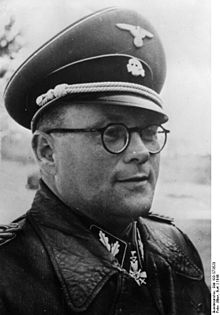 In
1935 Hohenlychen became part of a group of facilities controlled by the
infamous Nazi doctor Karl
Franz Gebhardt
RIGHT
. In
1935 Hohenlychen became part of a group of facilities controlled by the
infamous Nazi doctor Karl
Franz Gebhardt
RIGHT
.
Born on the 23rd. November, 1897 in
Haag in Oberbayern, Gebhardt served as
the Medical Superintendent at the sanatorium but he was also the
Consulting Surgeon of the
Waffen-SS, the Chief Surgeon of the SS
and Reich Police, and personal physician to
Heinrich Himmler.
Gebhardt, was the coordinator in chief of a series
of
surgical experiments performed on inmates
of the
concentration camps at
Ravensbrück and
Auschwitz. These experiments were an
attempt to defend his approach to the surgical management of grossly
contaminated
traumatic injuries acquired on the
battlefield. After the war he appeared at Nuremburg in the
Doctors' Trial (American
Military Tribunal No. I) and was
convicted of
war crimes and
crimes against humanity. He was found
guilty and condemned to death on the 20th. August, 1947 and subsequently
hanged on the 2nd. June, 1948, in
Landsberg Prison,
Landsberg am Lech, Bavaria.
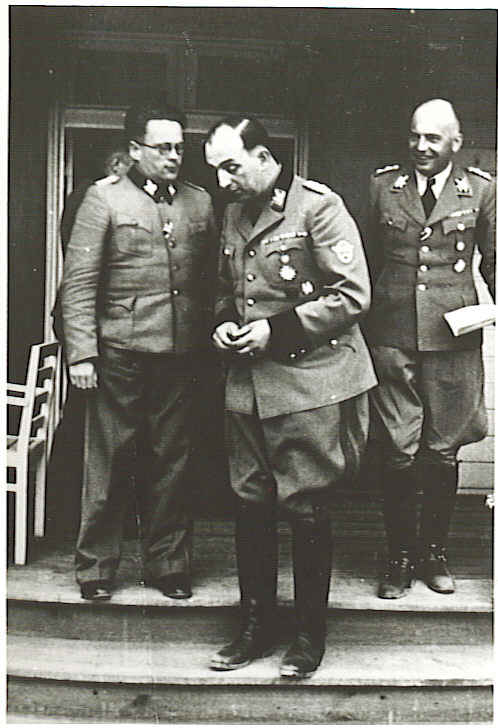 During
the 1930s and World War II Hohenlychen became a popular place with
officials of the Nazi hierarchy
LEFT
who would go there for rest and
recreation - both
Heinrich Himmler and Rudolf Hess practically took up residence when not on
official duties elsewhere.
The visitors books of that time have been signed by numerous prominent
Nazis including
Hitler, Reich sports leaders, secretaries, medical staff of the army, and
international guests from all over the world including Italy, England,
France, Portugal, Chile, Peru and Argentina.
The mayor of Tokyo spent some time there as did the troubled Greek royal
family. Regular series of high profile medical
lectures were held at Hohenlychen primarily for the then medical elite,
and the
gymnasium could be used as a cinema for film screenings and corporate
events. During
the 1930s and World War II Hohenlychen became a popular place with
officials of the Nazi hierarchy
LEFT
who would go there for rest and
recreation - both
Heinrich Himmler and Rudolf Hess practically took up residence when not on
official duties elsewhere.
The visitors books of that time have been signed by numerous prominent
Nazis including
Hitler, Reich sports leaders, secretaries, medical staff of the army, and
international guests from all over the world including Italy, England,
France, Portugal, Chile, Peru and Argentina.
The mayor of Tokyo spent some time there as did the troubled Greek royal
family. Regular series of high profile medical
lectures were held at Hohenlychen primarily for the then medical elite,
and the
gymnasium could be used as a cinema for film screenings and corporate
events.
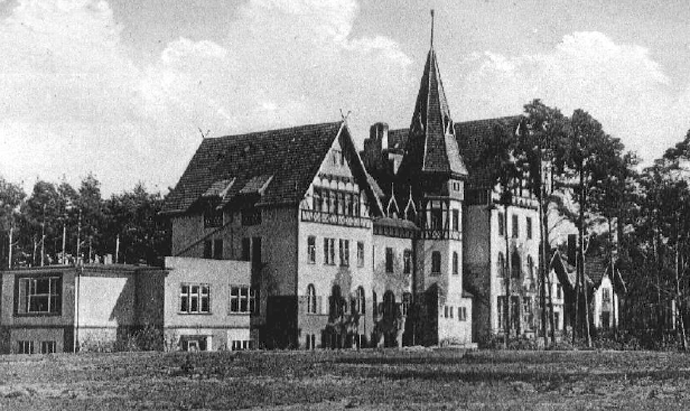 A
large swimming pool was built which had a removable roof for fine weather
bathing, and an adjacent water treatment facility was created. In
addition to the swimming pool, bathers could also swim in the Zenssee
lake.
Sports playing fields were created around the site, a large pharmacy
facility was built, and even a weather station was designed and
constructed to facilitate the study of the relationship between weather
and ailments and diseases. At this time
Hohenlychen achieved a great international reputation in the field of
meniscal injuries - meniscal
tears are possibly the most common knee injury. Athletes, particularly
those who play contact sports, are at high risk for meniscal tears. When
people talk about torn cartilage in the knee, they are usually referring
to a torn meniscus. The hospital also excelled in the
rehabilitation of accident victims at this time. A
large swimming pool was built which had a removable roof for fine weather
bathing, and an adjacent water treatment facility was created. In
addition to the swimming pool, bathers could also swim in the Zenssee
lake.
Sports playing fields were created around the site, a large pharmacy
facility was built, and even a weather station was designed and
constructed to facilitate the study of the relationship between weather
and ailments and diseases. At this time
Hohenlychen achieved a great international reputation in the field of
meniscal injuries - meniscal
tears are possibly the most common knee injury. Athletes, particularly
those who play contact sports, are at high risk for meniscal tears. When
people talk about torn cartilage in the knee, they are usually referring
to a torn meniscus. The hospital also excelled in the
rehabilitation of accident victims at this time.
The town of Lychen benefited greatly from the hospital in many ways, one
of which was in the unlikely form of tourism.
Between 1933 and 1942 more than 25,000 patients were treated there and of
course the hospital provided a great number of jobs for the local
inhabitants.
A second railway station was built to improve the transport infrastructure
and provide a faster connection into Berlin.
In 1939 after the outbreak of the Second World War, Hohenlychen was
converted into a military hospital. During this sad and highly contentious
period in German history
many highly questionable experiments were conducted to study the nature
and treatment of human wound infections.
SS-Obergruppenführer Reinhard Heydrich was the victim of an assassination
attempt in Prague on the
27th. May, 1942, by a British-trained team of Czech
and
Slovak soldiers
sent by the
Czechoslovak government-in-exile
to kill him in an operation code named
Anthropoid.
Although Heydrich survived
the initial attack he later died of complications caused by the infection
of his wounds. As a result the staff at Hohenlychen were tasked with
finding a reliable treatment for bacterial wound infections.
At this time the Western Allied forces had already discovered and refined
penicillin, but in Germany it was as yet unknown.
As the number of wounded soldiers flooding in from the Eastern Front
increased exponentially their survival depended to a great degree upon the
successful testing of a controversial drug known as sulfonamide, however
due to the pressing need for the drug many normal safety procedures were
bypassed and the drug was tested
intensively
directly on humans guinea pigs.
Gebhardt himself carried out extensive
clinical trials on women prisoners in Ravensbruck concentration camp
FAR LEFT
.
The experimental group consisted of 36 women who were intentionally
wounded, and then had their wounds contaminated with bacteria
CENTRE
LEFT . In addition many also had
contaminated wood and glass particles forced into their thighs
CENTRE
RIGHT to facilitate the study of
the progression of the resulting infections.
Three of the experimental subjects died, and the doctors soon realised
that sulfonamides were largely ineffective in the treatment of wound
infections. Running in parallel
to the
sulfonamide
experiments were barbaric studies into the transplantation of bone, nerves
and muscles, the shocking human detritus of which can be seen
FAR
RIGHT .
As has already been mentioned, Karl Gebhardt was sentenced to death and
hung, almost certainly by the famous English hangman Albert Pierpoint,
however his
assistant doctors, Fritz Fischer and Herta Oberheuser, were also sentenced
to life imprisonment for their parts in these appalling experiments.
Throughout the war Hohenlychen was left in comparative peace and was never
bombed due to the number of large red crosses painted on the roofs. When
Himmler eventually realised that the war was lost he tried to earn favour
with the allies by setting up a meeting
using the head of the Swedish Red Cross as an intermediary. In all three
meetings were held with no positive result, the last being on the 20th.
April, 1945. At
this time.
Himmler's base was at the now abandoned hospital and it was code-named "Styria
Hohenlychen".
On the 27th.
April, 1945, thirty two German soldiers were killed in a bombing raid and
then two days later, the hospital surrendered without a fight to the
rapidly advancing Soviet army. The Russian soldiers under the command of
General Nazarov ran amok in the hospital and totally destroyed the surgical
and X-ray facilities.
The
Helena
Kapelle
was also a victim of this destruction - the altar
and organ were ripped out and the empty shell of the building was used as
a fuel dump.
After the war, the Russians used the site as a 200 bed general hospital
and maternity facility, but some buildings
were also used as barrack blocks for Russian soldiers of the army of
occupation. Following the fall of the Berlin Wall, on the
31st.
August, 1993, the Russian Army finally ended the so called Besatzungsära
and left East Germany for good. Hohenlychen has remained neglected and
empty ever since though it was clear that some work on demolition and/or
redevelopment had commenced on the site in the summer of 2012 with a
variety of buildings stripped back to bare brick internally, and a number
of the smaller doctor's residences etc converted into very aesthetically
pleasing domestic housing. The other buildings remain comprehensively
sealed and sadly it was not possible for us to find a route into the main
hospital building at all. The entire site is rapidly reverting to
woodland and we had the bizarre and exciting, but ultimately rather
frightening experience of meeting a small herd of wild boar crashing
through the heavy ferns and foliage!
|
Below is a
selection of the photographs we took in and around
Heilstätten Hohenlychen...
To
view any of the photographs in a far bigger size then click on the
image of your choice and it will open in a new window.
Click on the
BACK button
to the right if you wish to return to our urb-ex
site front page... |
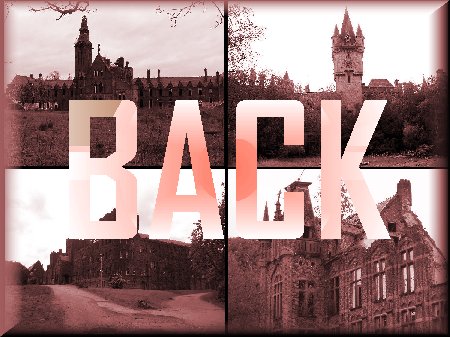 |
|
The photographs on this
website MAY NOT BE USED WITHOUT THE EXPRESS PERMISSION of the
website author... |
|